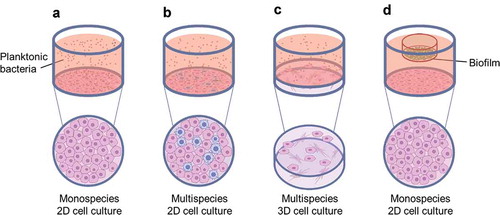Figures & data
Table 1. Summary of co-culture methodologies, common protocols employed, and the advantages and disadvantages of each model system.
![Figure 1. (a) Common bacterial species present in pathogenic oral biofilms and their communication between species (adapted from Parashar et al. [Citation92]). (b) Cells and tissue types present in the oral mucosa, demonstrating complexity of 3D structure.](/cms/asset/780255ae-0947-4254-b683-ab5cdda57575/zjom_a_1773122_f0001_oc.jpg)

